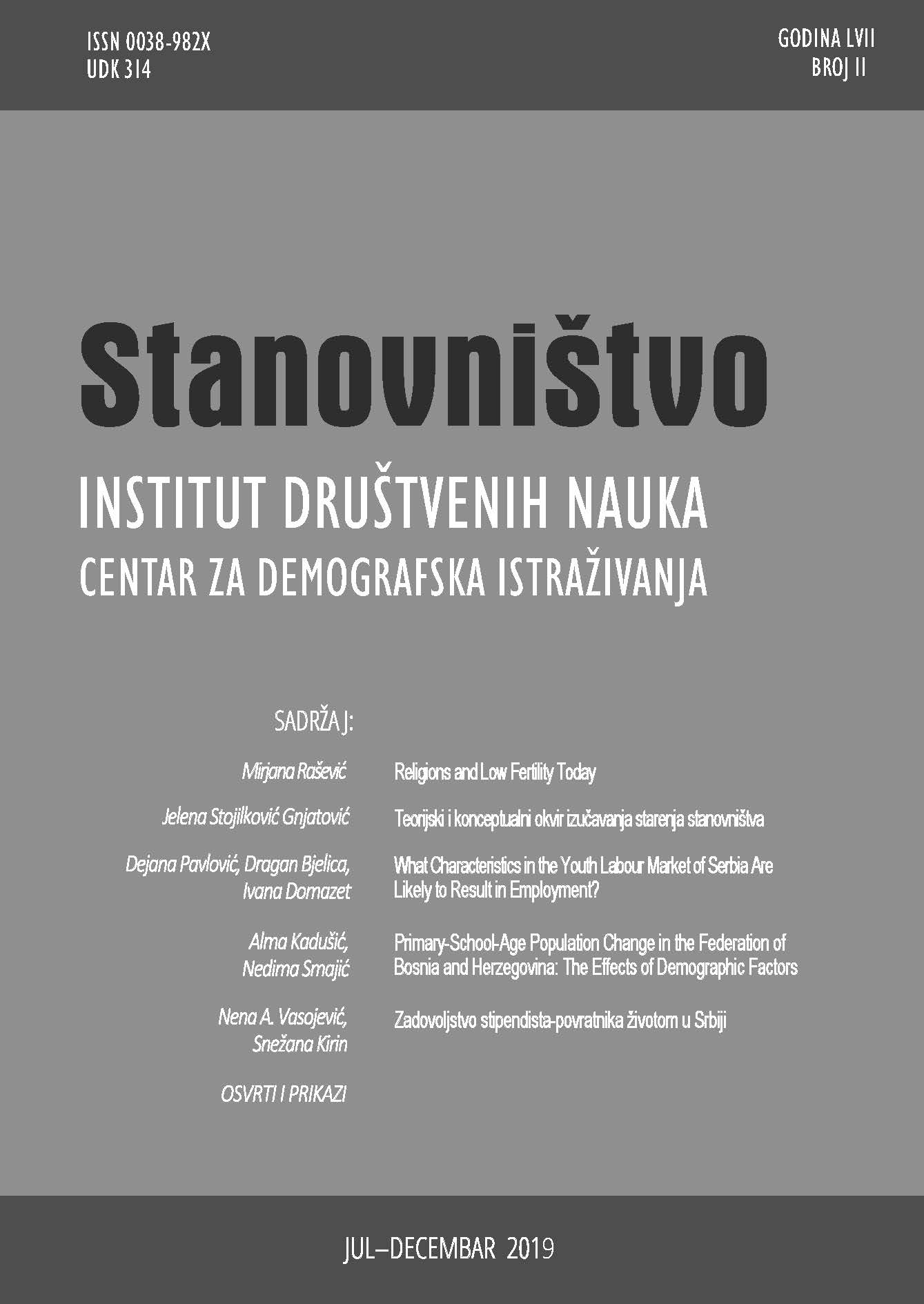What Characteristics in the Youth Labour Market of Serbia
Are Likely to Result in Employment?
What Characteristics in the Youth Labour Market of Serbia
Are Likely to Result in Employment?
Author(s): Dejana Pavlović, Dragan Bjelica, Ivana DomazetSubject(s): Social development, Economic development, Human Resources in Economy, Socio-Economic Research
Published by: Институт друштвених наука
Keywords: youth; unemployment rate; Serbia; labour market; logistic regression
Summary/Abstract: In stark contrast to certain EU member countries, Serbia faces a high youth un-employment rate of over 30% (34.9% in 2016, 32.8% in 2017 and 31% in 2018). This paper provides a logistic regression analysis of what characteristics among youth (15-30 years of age) contribute to the likelihood of their employment in Serbia. While youth is internationally defined as being between the ages of 15-24, this paper broadens it to 15-30, as it is defined in Serbia (RS) for the purposes of youth employment/unemployment and for the country’s “National Youth Strategy from 2015 to 2025.” The study was conducted using micro data from the Labour Force Survey provided on request from the Statistical Office of the Republic of Serbia. The indicators that affect whether a young person will be employed or not are: the financial background of the participant’s household, earnings, age, gender, and total years of work experience. Theoretically, although it may be anticipated that unemployed individuals who have greater work experience find it easier to find a job, employment does seem to automatically generate longer working hours. The results of the research are both practical and scientific, as they may not only assist policy-makers in the process of writing strategies on youth employment, but also bear groundwork for further study.
Journal: Stanovništvo
- Issue Year: 57/2019
- Issue No: 2
- Page Range: 35-47
- Page Count: 13
- Language: English

